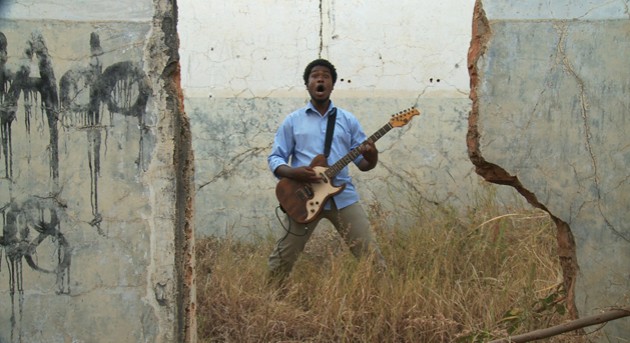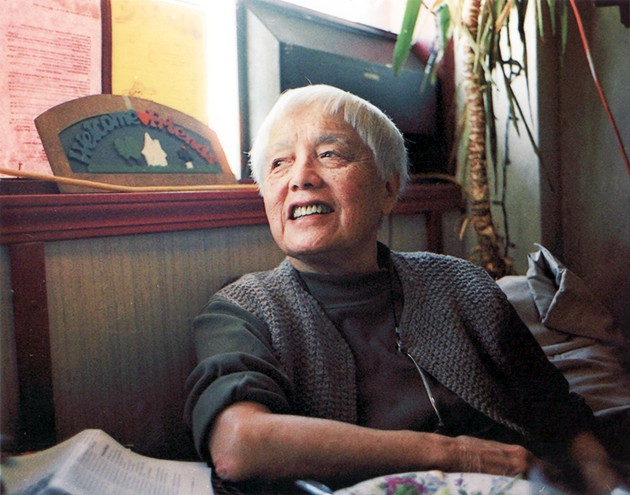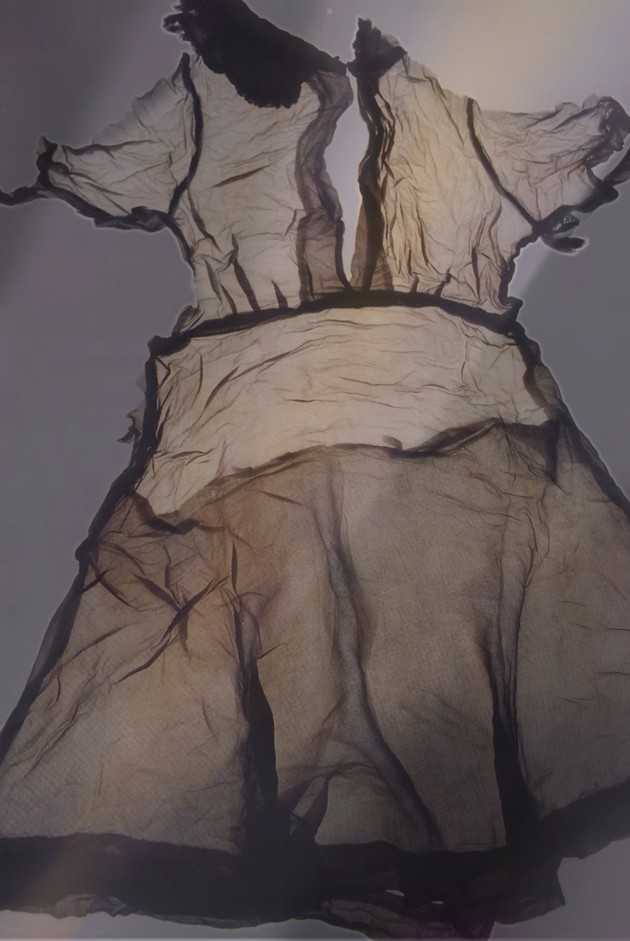DOC NYC wrapped this past Thursday, and the jury awards have been announced. In the Viewfinders Competition, "chosen for their distinct directorial visions," according to the festival, the Grand Jury Prize winner was Mahdi Fleifel's A World Not Ours, a wry, humorous look at the Palestinian refugee camp in Lebanon where the director grew up. From the jurors' statement: "Director Mahdi Fleifel has drawn on his family's home movies, archival footage, and his own extensive video diaries to invite us into a world completely unfamiliar to most viewers, and one from which most residents cannot leave. Unlike his friends and family who have spent decades living in the camp, Fleifel is free to come and go - but his portrayal of the world of the camp stayed with us long after his film ended."
In the Metropolis Competition, for New York City-centric documentaries, the Grand Jury Prize winner was David L. Lewis's The Pleasures of Being Out of Step, a portrait of renowned jazz critic and free speech advocate Nat Hentoff. The jurors' statement: "Nat Hentoff epitomizes the spirit of New York: an outsider, an underdog, an intellectual and iconoclast. The Pleasures Of Being Out of Step draws a fascinating portrait of a gifted jazz critic, linking the dissonances and syncopation of an American art form with the right to free speech. The film captures, through a series of interviews and great archival footage, the essence of Hentoff and shows how his self-examined life contributed to the cultural and political debates of the mid late 20th century."
In the Shorts Competition, the Grand Jury Prize winner was Kelly O'Brien's Softening, which explores the filmmaker's relationship with her disabled son. The jurors' statement: "In her deft mix of vérité, home movies, photographs, recreations, and experimental footage, director Kelly O'Brien bravely presents her own conflicted experience grappling with mothering a disabled child with emotional honesty, integrity and artistry."
The SundanceNOW Audience Award went to Michael Kleiman's Web, which follows Peruvian children living in remote regions who participate in the One Laptop Per Child program.
In all, DOC NYC was a great festival, with some very impressive films and interesting discussions with the filmmakers. Below are some more films I was able to catch at the festival.
DEATH METAL ANGOLA (Jeremy Xido)
The healing power of rock music, in this case the death metal and black metal kind, comes to Angola to soothe the souls of young people traumatized by the country's civil war. Metal may seem far removed from rock n' roll's blues-based origins, but as one person in the film points out, not so. The drum rhythms of metal, he argues, are almost identical to the tribal drums he has heard in Angola. "Death metal belongs to Africa," he declares. The one quibble is that we're not told how this music came to Angola; it's as if it suddenly just appeared to give a voice to people's pain. Still, this is a fascinating look at a rich subculture.
AMERICAN REVOLUTIONARY: THE EVOLUTION OF GRACE LEE BOGGS (Grace Lee)
Among the other great things it does, this film points out, both in its title and within its text, that the word "evolution" is contained in the word "revolution." And the practice and theory of revolution is the endeavor that 95 years young Grace Lee Boggs has devoted most of her life to. Director Grace Lee skillfully weaves Boggs' ideas into her portrait of a life that has been witness to some of the most turbulent periods of American history. Lee gets at the central contradiction of Grace Lee Boggs: she stresses the necessity of being evolutionary in one's life and thinking, while being stubbornly rigid in her own ideas and being loath to admit to her internal struggles and problems. Still, one comes away with great admiration for this remarkable, and indeed, revolutionary woman who never abandoned the people of her adopted home of Detroit.
THINGS LEFT BEHIND (Linda Hoaglund)
Linda Hoaglund, the woman who writes all those great subtitles for Japanese films, brings her second documentary to DOC NYC. Japanese artist Ishiuchi Miyako photographs the belongings of those who died when the atomic bomb dropped, which have been donated to the Hiroshima Peace Museum. Ishiuchi stages an exhibit of these photographs in Vancouver. Her photographs take the horror and tragedies of war out of the realm of rote statistics and gruesome photos, and bring them down to the individual and deeply human level. A boy's kimono, a burnt dress, a broken pair of glasses, an adorable doll, a pair of slippers: all these objects have a life and a story behind them. They are synecdochic reminders of the human losses caused by war, and how war doesn't discriminate among who it takes away from the world. The haunting images of these objects, sensitively rendered by both the photographer and Hoaglund's camera, are incredibly moving.
THE PLEASURES OF BEING OUT OF STEP (David L. Lewis)
This is the story of Nat Hentoff, jazz critic and First Amendment absolutist. He isn't afraid, and in fact prides himself on, following his principled stances to their extreme logical conclusions, often losing friends and making enemies in the process. Whether explicating the music of Charles Mingus and John Coltrane, or outraging people by defending the right of a Nazi group to march in a town with a large Jewish population or by coming out very strongly against abortion, Hentoff is never less than a riveting and provocative character.

MISFIRE: THE RISE AND FALL OF THE SHOOTING GALLERY (Whitney Ransick)
This is the story of the upstart indie company The Shooting Gallery, started by a bunch of alumni from SUNY-Purchase, who just wanted to make great movies for very little money. It's told by an insider who was one of the gang. And they did make a lot of great movies, as this film reminds us: Laws of Gravity, The Unbelievable Truth, Niagara Niagara, You Can Count on Me, among others. But then along came Larry Meistrich, then Sling Blade, then $10 million from the Weinsteins. And that's where it all began to go downhill. For a period in the mid-90s, there was an indie film bubble, which eventually ended up just like all the other disastrous bubbles that blew up spectacularly in people's faces. With all that money came the hubris, the ego, the sense of invincibility, and then the losses, lack of focus, and the financially criminal shenanigans that finally killed the company. This story is told breathlessly, breezily, perhaps a bit too breezily, at the expense of a bit more depth and nuance. Still, the film effectively brings back a time during which, however briefly, indie films and filmmakers held the keys to the movie kingdom.
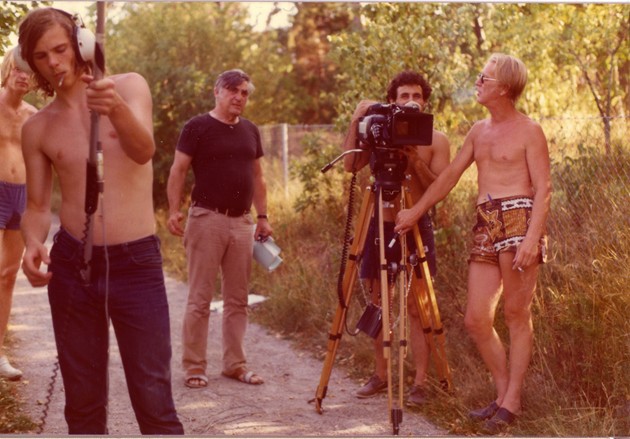
THE SARNOS: A LIFE IN DIRTY MOVIES (Wiktor Ericsson)
Joe Sarno, who was, in the words of porn actress Annie Sprinkle, "the Ingmar Bergman of sex movies," made 75 films, all of which he wrote himself. He used his chosen genre of sexploitation to explore sexual and human relationships, centering mostly on women. He remained firm to keeping his films softcore, believing full explicitness wasn't necessary to get the sex across. But when hardcore movies became popular in the 70s, his genre, and his career along with it, was basically over. And there's a reason this film is called "The Sarnos": the other part of the story concerns Peggy, Joe's loving wife and better half, who nurtured Joe and made it possible to continue making movies even after the market, his audience, and the times had passed him by. The most touching scene of the film has Peggy proudly showing Joe's New York Times obit – Sarno died in 2010 – prominently featured at the top of the page. This was vindication for both of them, a "fuck you," as Peggy says, to all those who doubted Joe when he was alive, and who criticized Peggy for sticking by him. This film shows that Sarno, though he may have been in a disreputable genre, nevertheless was a true artist, who dedicated his life fully to his craft.
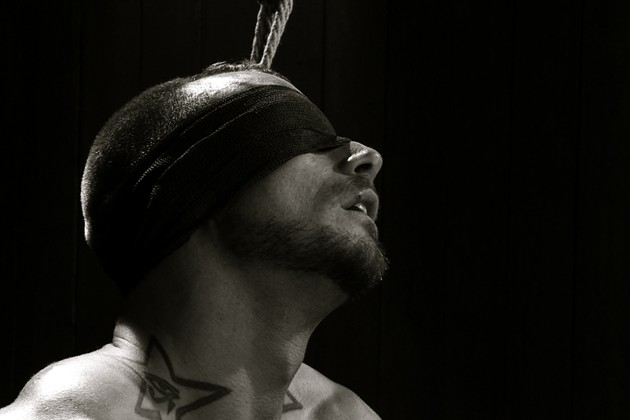
KINK (Christina Voros)
This film takes us inside the cavernous San Francisco Armory headquarters of BDSM porn purveyors Kink.com, one of the most successful companies in the business. "James Franco Presents," we're proudly informed at the beginning. But Franco and company are giving us some hellified mixed messages here. On the one hand, it may look like people are getting hurt and exploited, but it's really all OK, everyone knows what they're getting into, there are lots of safeguards in place, and they're just catering to particular people's tastes. But on the other hand, one woman says, "There are a lot of lost souls here." And another acknowledges that money often clouds issues of consent and how much pain they're willing to endure. So which is it? Is it both? Is there any point to this other than as another provocative notch on polymath Franco's belt? It’s hard to tell. It also doesn’t help that the film’s structure is so numbingly repetitive – talking head, porn shoot, talking head, porn shoot – that it can put one to sleep, which shouldn’t be the case in a film about porn. However, it is interesting to note that staff meetings at porn companies are just as boring as anywhere else.
INSIDE THE MIND OF LEONARDO: 3D (Julian Jones)
Not so much a traditional documentary as a visual essay on the life and ideas of Leonardo da Vinci, the original Renaissance man. Other than some explanatory titles to put things in context, every word spoken in the film (with some key sentences written on the screen) is taken from Leonardo's voluminous diaries. These words are dramatized with great intensity by actor Peter Capaldi. Present day scenes of the places Leonardo lived – Tuscany, Florence, Milan – illustrate Leonardo's words and ideas. Other than in some arresting images of birds in flight and a few other scenes, the 3D doesn't add that much to the experience. Still, this film effectively brings to vivid life the ideas, ambitions, inventiveness, and prescience of this remarkable, self-taught genius.

Do you feel this content is inappropriate or infringes upon your rights?
Click here to report it, or see our
DMCA policy.











